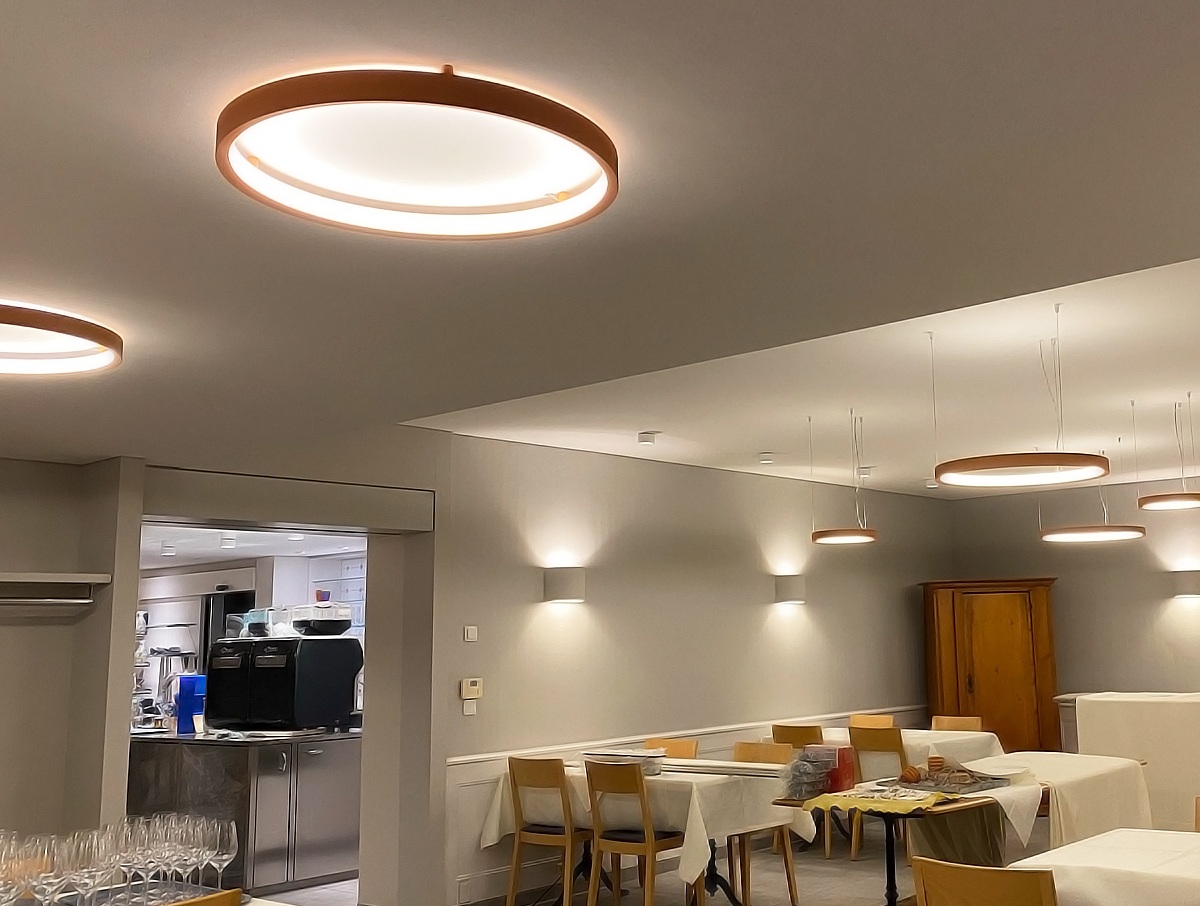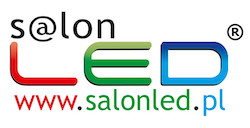-
Track lighting in the bathroom – is it worth choosing? 11/14/2025 14:54:19What does 2700K, 3000K, 4000K mean – which color temperature should I choose? 11/12/2025 19:23:09How to Dim LED Lamps? An Expert's Guide 11/10/2025 17:59:57What is indirect light and why is it fashionable?11/19/2025 18:37:52

What Exactly Is Indirect Lighting?
Indirect lighting refers to any lighting technique in which the light source does not shine directly into the room, but instead reflects off a surface — typically a wall, ceiling, or architectural element. This creates a soft, diffused glow that gently fills the space without glare or harsh shadows.
It is the opposite of direct lighting, which produces focused beams and sharp contrasts.
Indirect lighting creates atmosphere, enhances comfort and visual wellbeing, and brings a subtle sophistication to modern interiors.The most common forms of indirect lighting include:
-
concealed LED strips in ceilings or coves,
-
wall lights that project light upward or onto the wall,
-
uplights and up-and-down fixtures,
-
wall-wash lighting,
-
backlit furniture and architectural panels.

Why Has Indirect Lighting Become So Popular? (Trend 2025–2026)
1. It Creates a Cozy, Harmonious Atmosphere
The soft, reflected glow instantly makes a space feel more relaxing and inviting.
It eliminates harsh contrasts and creates an elegant, balanced mood — perfect for contemporary and minimalist interiors.2. It Highlights Architecture
Designers treat light as an architectural tool rather than just a functional necessity.
Indirect lighting can:-
emphasize lines and shapes,
-
highlight niches and recesses,
-
showcase textures and materials,
-
create depth and visual drama.
3. It Reduces Eye Strain
Since the light source is hidden, indirect lighting does not cause glare or reflections.
This makes it ideal for:-
living rooms,
-
bedrooms,
-
home offices,
-
relaxation and wellness spaces.
4. It Works Perfectly With LED Technology
Modern LED strips allow for:
-
concealed installation,
-
uniform light distribution,
-
excellent energy efficiency,
-
smart-home integration.
5. It Complements Layered Lighting Design
Modern interiors use three layers of lighting:
-
ambient,
-
task,
-
accent.
Indirect lighting often functions as the accent layer — adding atmosphere and enhancing the visual richness of a room.
Uplights and Wall-Reflecting Fixtures — The Core of Indirect Lighting
A key element of indirect lighting are fixtures that direct light upward or onto the wall, using surfaces as reflectors.
These solutions deliver some of the most desirable and luxurious lighting effects in contemporary design.Uplights – Subtle, Architectural, Highly Modern
Uplights direct light towards the ceiling, which then reflects it back into the room, creating a soft, ambient glow.
Why uplights are so effective:
-
visually raise the ceiling,
-
evenly brighten the room,
-
perfect for evening relaxation,
-
eliminate direct glare.
Where to use them:
-
living rooms,
-
bedrooms,
-
home offices,
-
hallways and entrance areas.
Uplights are considered one of the most elegant forms of indirect lighting, often used in premium interiors.
Wall-Reflecting Sconces — Soft, Elegant, Decorative
Wall sconces that cast light onto the wall create a refined and visually appealing effect.
The wall acts as a giant diffuser, enhancing depth and atmosphere.Why designers love them:
-
beautifully highlight wall textures (stone, wood, concrete, fluted panels),
-
add sophistication to minimalist rooms,
-
depending on the model, can replace general lighting in small interiors,
-
create a gallery-like ambiance.
Up-and-down sconces (dual-direction fixtures) deliver symmetrical, architectural light that adds rhythm and structure.
Wall-Wash Lighting — A Gallery-Inspired Effect
Wall-wash lighting illuminates the wall evenly from top to bottom, creating a luxurious, high-end look.
It is especially effective in:
-
living rooms with feature walls,
-
modern corridors,
-
minimalist apartments,
-
bathrooms with decorative surfaces,
-
spaces designed to showcase art.
Wall-wash lighting is widely used in luxury hotels, restaurants, and boutiques

Types of Indirect Lighting and Where to Use Them
Ceiling-Reflected Lighting
Soft, ambient, ideal for living and relaxation areas.
LED Cove Lighting
Commonly used on ceiling perimeters for elegant atmospheric glow.
Wall Sconces (uplight, up-and-down, wall-wash)
Decorative, architectural, perfect as accent lighting.
Furniture and Built-In Profiles
Add floating effects to shelves, cabinets, beds, and TV units.
Benefits of Indirect Lighting
✔ no glare
✔ natural, soft atmosphere
✔ ideal for evening relaxation
✔ works with smart-home systems
✔ elevates the character of the space
✔ highlights architectural featuresLimitations to Consider
-
Indirect lighting alone may not be bright enough for tasks.
-
It should ideally be combined with task and ambient lighting.
-
It requires thoughtful design and proper installation.
Choosing the Right Color Temperature
-
2700K – warm, cozy, perfect for evening relaxation,
-
3000K – soft white, elegant and hotel-like,
-
4000K – clean, neutral white, ideal for kitchens and bathrooms,
-
6000K – cool, technical lighting (used sparingly).
For most indirect lighting setups, 3000K provides the best balance between warmth and clarity.
Conclusion — Why Indirect Lighting Is Worth Using
Indirect lighting enhances:
-
comfort,
-
atmosphere,
-
visual quality,
-
architectural appeal.
It’s not just a trend — it has become a signature element of modern interior design, offering timeless elegance and unparalleled comfort.

Menu
- +Outdoor lighting
- +Indoor lighting
- Living room
- Bedroom
- Dining room
- LED bathroom lighting
- LED kitchen lighting
- LED stairs lighting
- +LED bulbs
- All manufacturers
- Prices drop
- New Products
- Bestseller




